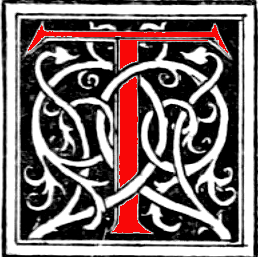
he cause of our backwardness in painting had nothing whatever to do with natural incapacity for art, and it is not far to seek. Amid the desolation of the country in the wars of the Roses, we lost the seed-time of art, which other European peoples enjoyed. Then, when the revival of letters and of arts burst forth in Europe, the Reformation came to our island, and held possession of it as of no other country in the world. But, just then, pictorial art was a part of religion; its subjects were religious; its places of exhibition were the walls of churches and holy houses; it was identified with an idolatrous faith, with image worship and prayers to saints. England abandoned that faith, and turned her back upon the art which ministered to it. There was no place for the grand pictorial art in England so long as it was only sacred, and if not sacred, heathen. . . .
Painting could not flourish among us after the Reformation, because just then it was in its greater efforts a religious art, and was therefore opposed to the religious sense of the country. But while painting died out among us the drama came to life, and rose to greatness. A splendid future lay before it, and so much vigour did it display that one might have expected it to live for ever. In about half a century it was pollarded by the Puritans; in another half century it began to wither. It had no root in the moral sense of the people; it studiously offended their consciences. But now comes the next great fact.
As the drama, in all its pride of place, decayed, painting began to revive. The pictorial art had no chance in England so long as it jarred upon the religious conscience. A few noblemen might, patronize it, and might begin to furnish their galleries; but these were rare exceptions. It was not till Hogarth rose in the 18th century, and seized upon the common life of the people, that painting as an art made a very powerful impression on the English mind. Curiously enough, too, Hogarth, in entering on this field, insisted, like his contemporary Richardson, on making a somewhat ostentatious display of moral purpose, as if it were necessary to moralize in order to effect moral good. The offence may be forgiven. The art which he saw around him, chiefly the work of foreigners, had fallen into inanity, had no interest of subject, had little more than a certain technical skill to recommend it. He would follow a different course; he would speak to the heart; he would improve as well as please; and he would place in a strong light which would force conviction on the English mind his superiority to the painters of the day, by making his moral purpose very prominent. Whether he is to be praised or blamed, however, the point to be observed is, that whereas up to his time there was no school of painting in England, because the moral sense of our Protestant people could not abide religious representations, the first English painter won the hearts of his countrymen to the art which he practised, by making a direct appeal to their moral sense, such as they could frankly approve. Since then the art of painting has advanced more and more among us, and within the last thirty years its popularity has risen to full tide. In that time, we have seen even those ultra Puritans, who were suspicious of painters and painting, carried away by the stream, and giving their homage where it is due. [II, 166, 170-72]
Links to Related Material
Bibliography
Dallas, Eneas Sweetland . The Gay Science. 2 vols. London: Chapman and Hall, 1866. A HathiTrust online version of a copy in the Harvard University Library. Web. 30 April 2022.
Created 3 May 2022